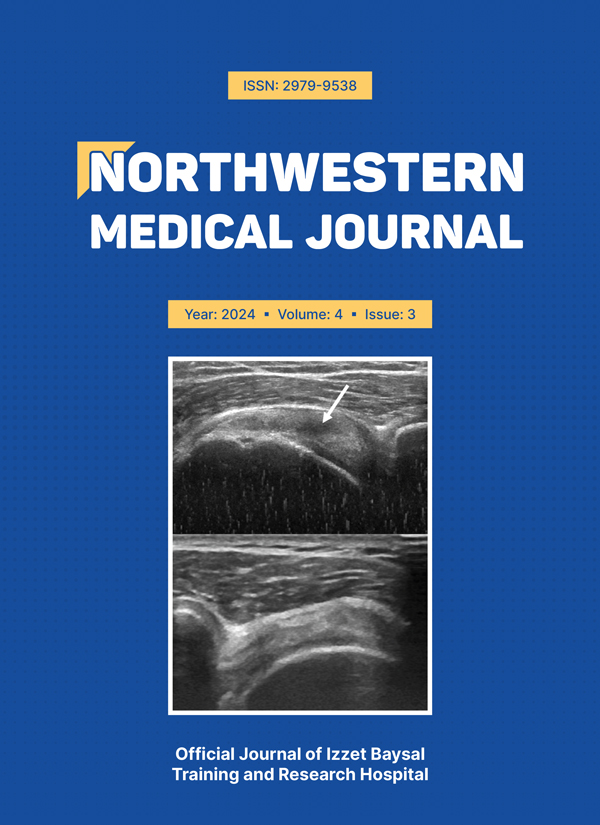Abstract
Aim: Sepsis-associated acute kidney injury (AKI) is a frequent complication of critically ill patients, and results need for renal replacement therapy (RRT). We aimed to investigate the difference in vital signs, hemodynamic parameters, and laboratory values after receiving RRT in the AKI patients with/without sepsis. Also, we examined the different renal injury grading systems relationships used in intensive care units (ICU).
Methods: RRT-treated patients due to AKI were enrolled. Patients were divided into two groups by using Sepsis-2 criteria (2012); whether there is sepsis or not. Acute physiology and chronic health evaluation II (APACHE II) scores, 28th and 90th day mortality recorded. RIFLE classes, renal sequential organ failure assessment (SOFA) scores, and kidney disease: improving global outcomes (KDIGO), stages were also calculated. Patients’ Glasgow Coma Scale (GCS), vital parameters, laboratory values, Horowitz rates, vasopressor/inotropic agent requirements at RRT start, 12th and 24th hours were recorded.
Results: 153 patients were included in the study, and 93 were septic. APACHE II score and 28th day mortality were significantly higher in Group Sepsis. Advanced age was found to be associated with 90th day mortality. Both in two groups many parameters such as acidosis, Horowitz ratio, and GCS improved after RRT initiation. When renal scoring systems were compared with each other KDIGO was associated with the RIFLE classification and renal SOFA.
Conclusion: Many improvements were observed in all AKI patients after RRT but in septic patients, oxygenation and GCS showed better improvement. The mortality rate increased when AKI got complicated with sepsis.
Keywords: acute kidney injury, intensive care medicine, renal replacement therapy, sepsis
Copyright and license
Copyright © 2024 The Author(s). This is an open-access article published by Bolu İzzet Baysal Training and Research Hospital under the terms of the Creative Commons Attribution License (CC BY) which permits unrestricted use, distribution, and reproduction in any medium or format, provided the original work is properly cited.
How to cite
References
- Zhang L, Yan Tang GK, Liu S, et al. Hemofilter with Adsorptive Capacities: Case Report Series. Blood Purif. 2019; 47(Suppl 3): 1-6. https://doi.org/10.1159/000499357
- Peerapornratana S, Manrique-Caballero CL, Gómez H, Kellum JA. Acute kidney injury from sepsis: current concepts, epidemiology, pathophysiology, prevention and treatment. Kidney Int. 2019; 96(5): 1083-99. https://doi.org/10.1016/j.kint.2019.05.026
- Cruz DN, Bolgan I, Perazella MA, et al. North East Italian Prospective Hospital Renal Outcome Survey on Acute Kidney Injury (NEiPHROS-AKI): targeting the problem with the RIFLE Criteria. Clin J Am Soc Nephrol. 2007; 2(3): 418-25. https://doi.org/10.2215/CJN.03361006
- Khwaja A. KDIGO clinical practice guidelines for acute kidney injury. Nephron Clin Pract. 2012; 120(4): c179-84. https://doi.org/10.1159/000339789
- Bagshaw SM, Laupland KB, Doig CJ, et al. Prognosis for long-term survival and renal recovery in critically ill patients with severe acute renal failure: a population-based study. Crit Care. 2005; 9(6): R700-9. https://doi.org/10.1186/cc3879
- Schrier RW, Wang W. Acute renal failure and sepsis. N Engl J Med. 2004; 351(2): 159-69. https://doi.org/10.1056/NEJMra032401
- Poston JT, Koyner JL. Sepsis associated acute kidney injury. BMJ. 2019; 364: k4891. https://doi.org/10.1136/bmj.k4891
- Parmar A, Langenberg C, Wan L, May CN, Bellomo R, Bagshaw SM. Epidemiology of septic acute kidney injury. Curr Drug Targets. 2009; 10(12): 1169-78. https://doi.org/10.2174/138945009789753183
- Bagshaw SM, Uchino S, Bellomo R, et al. Septic acute kidney injury in critically ill patients: clinical characteristics and outcomes. Clin J Am Soc Nephrol. 2007; 2(3): 431-9. https://doi.org/10.2215/CJN.03681106
- Poukkanen M, Vaara ST, Pettilä V, et al. Acute kidney injury in patients with severe sepsis in Finnish Intensive Care Units. Acta Anaesthesiol Scand. 2013; 57(7): 863-72. https://doi.org/10.1111/aas.12133
- Wang X, Jiang L, Wen Y, et al. Risk factors for mortality in patients with septic acute kidney injury in intensive care units in Beijing, China: a multicenter prospective observational study. Biomed Res Int. 2014; 2014: 172620. https://doi.org/10.1155/2014/172620
- Legrand M, Dupuis C, Simon C, et al. Association between systemic hemodynamics and septic acute kidney injury in critically ill patients: a retrospective observational study. Crit Care. 2013; 17(6): R278. https://doi.org/10.1186/cc13133
- Abdo AA, Castellanos R, Rocha M, et al. Continuous venovenous hemodiafiltration in patients with multiple organ dysfunction syndrome in an intensive care unit. MEDICC Rev. 2012; 14(3): 26-30. https://doi.org/10.37757/MR2012V14.N3.5
- Cai C, Qiu G, Hong W, Shen Y, Gong X. Clinical effect and safety of continuous renal replacement therapy in the treatment of neonatal sepsis-related acute kidney injury. BMC Nephrol. 2020; 21(1): 286. https://doi.org/10.1186/s12882-020-01945-z











